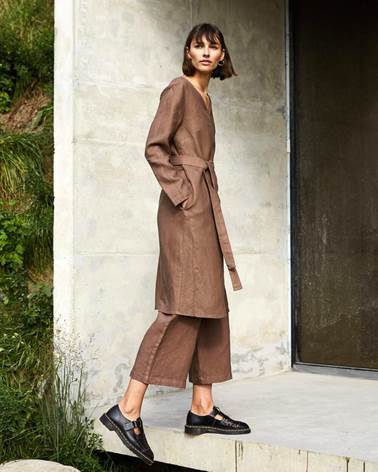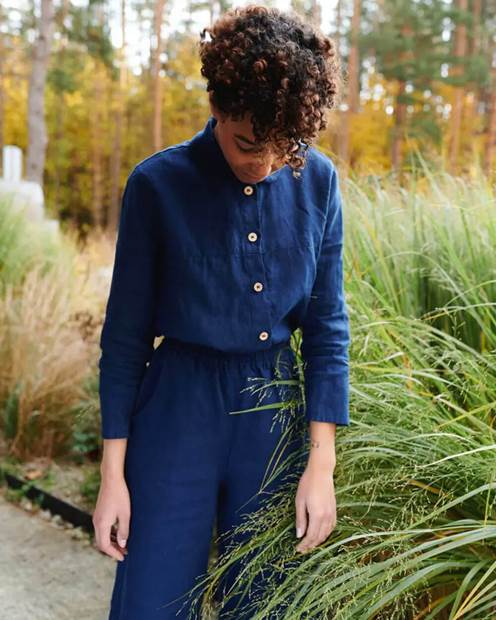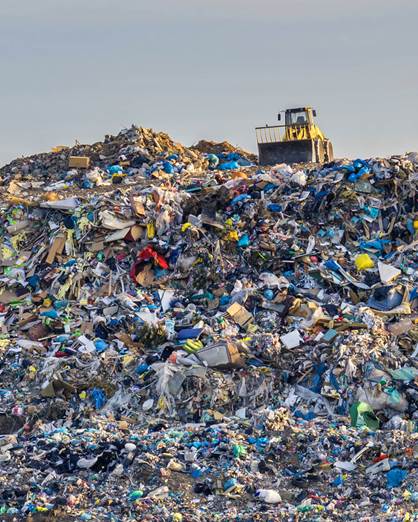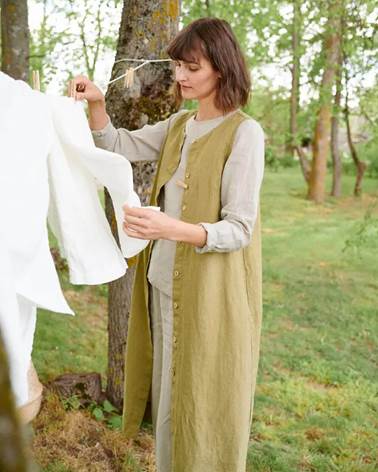When you go shopping for fashion, what catches your eye first? Often, it’s the overall appearance of the outfit: the hue, the cut, the design, and all other aesthetic features. By focusing on these, the fabric often takes a backseat. However, the material is the building block of an outfit, and thus, it should be the most important of all.
This point of view is essential when sustainable fabrics are introduced in the conversation. The use of natural fibres and textiles is critical, especially now, when the fashion industry has become one of the biggest environmental polluters. The fashion industry is responsible for humanity’s most significant waste, clogging up the environment.
No, this article is not about shopping bags (although these also contribute to the waste), but rather about the fabrics used to make our garments.
Besides ending up as non-recyclable waste, most of the conventional materials we use to create fashion require enormous amounts of water – during crop cultivation and processing. Conventional cotton, for example, is hugely detrimental to the environment, as the creation of a simple t-shirt requires thousands of litres of water.
What is sustainable clothing?

In simple terms, sustainable clothing is apparel designed to minimize the depletion of resources and to avoid further creation of waste and adverse environmental effects. There is a need to combat some of the ecological damage the fashion industry has caused in the modern era.
Sustainability in fashion can be achieved by creating and embracing clothes made from natural and sustainable fibres.

Natural fibres are fibres grown without pesticides, are recyclable, free of chemicals, and sustainably cultivated. I can even go a step further and include sustainable fibres produced in fair practices in mind. However, I will focus on sustainably produced fibres such as organic cotton, organic hemp, organic linen, and many more.
Why should you choose sustainable clothing?

First of all, research shows that current clothing dyes can cause cancer with more prolonged exposure. And it makes sense, as these dyes are full of chemicals such as formaldehyde and other carcinogenic compounds, which harm the environment, animals, and humans.
The more you wear these clothes, the more exposure you have to the toxic chemicals present in your garments. Some of the most common signs of exposure include headaches, skin rashes, and breathing difficulties.
Similarly, conventional cotton, albeit cheap, has been shown to pose several health risks. And again, it makes sense because almost 24 per cent of the world’s insecticide production ends up in the growing of this crop.
Pair that with the fact that this crop occupies 2.4 per cent of the world’s total cultivable land, and you get the picture. Overall, the fabrics resulting from conventional cotton are choke-full of chemicals that make their way into our bloodstreams, wreaking havoc. Unfortunately, most customers are still unaware of this, consider this fabric to be natural.
So… what’s the solution?
Sustainable Fabrics! For once, the creation of natural and organic fabrics relies on sustainable farming and processing methods. Then, sustainable fabrics require far less water than the conventional counterparts.
Finally, the lack of chemicals makes these fabrics safe for the environment and our bodies. If you are looking to avoid toxins in your closet, sustainable fabrics are an excellent place to start.
Furthermore, in the process, you’ll be helping farmers, workers, and everyone else in the fashion ecosystem.
Are you buying sustainable fabrics?

Here are some checks you can do to ensure you are on the sustainable fashion track:
1. The origin
Work with a company that is clear about where it sources its materials. Most reputable manufacturers now run an online store that provides customers and partners with information needed to ensure they do not buy unsustainably sourced fabrics.
2. The fibres
Look for all-natural and biodegrade fibres such as linen, wool, organic cotton, and hemp. Avoid plastic-based fibres that shed and end up in water sources, soil, and even food. These materials are hard to break down, often injuring marine life.
Make sure you choose natural materials that break down and add to the environment instead of ruining it.
3. The price
If the price is too good to be true, that’s often a sign of concern. For once, the garment might come from a place with low regulations where children were exploited to manufacture.
Or, it comes from farms that are not sustainable, from manufacturers taking shortcuts to turn a high profit. Moreover, if you find natural fabrics at a low price, there’s probably a farmer or worker whose life is negatively affected.
Sustainable fashion is all about protecting the environment and the people working in fashion, as a whole. With every conscious choice, you can improve human life, support better wages and working conditions for farmers and workers alike.
Your conscious choice of sustainable fashion is the only way to stop the fashion industry from destroying this world.
This article has not been edited by Fibre2Fashion staff and is re-published with permission from thevou.com















Comments